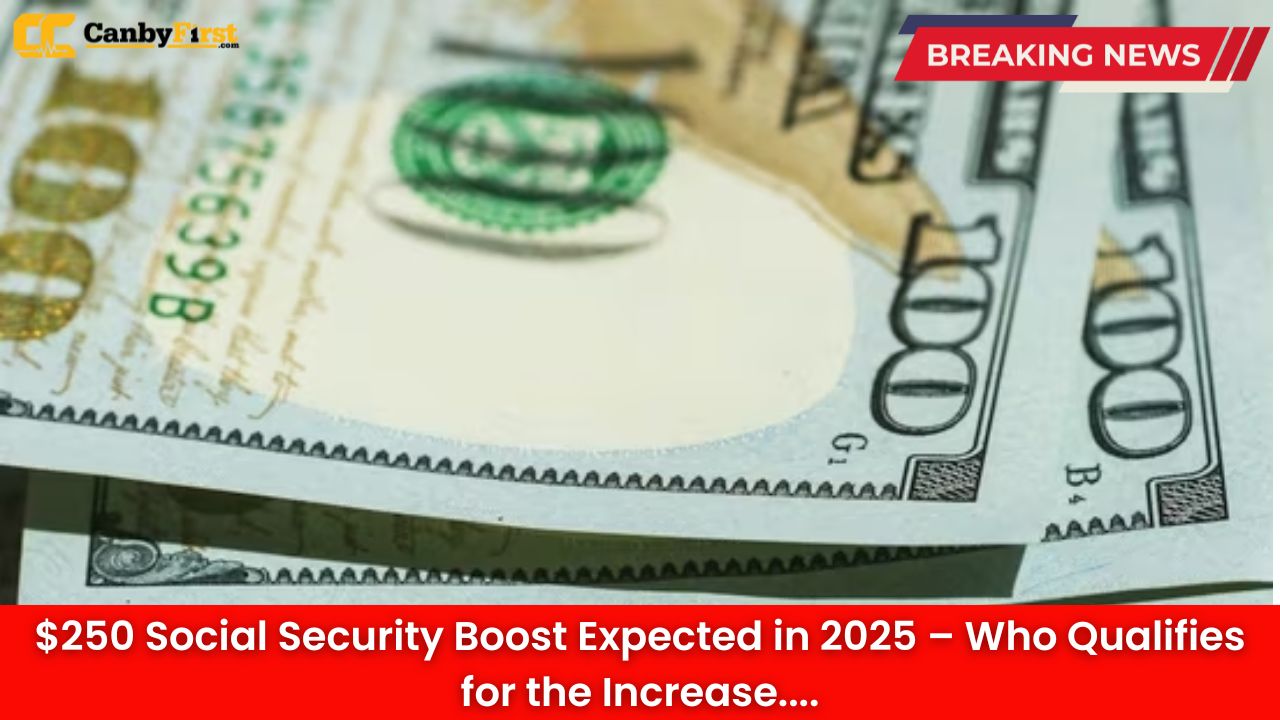A new federal proposal could bring welcome relief to millions of retirees, disabled Americans, and low-income beneficiaries in 2025. Lawmakers are pushing for a one-time $250 Social Security boost to help offset the soaring cost of living, rising healthcare expenses, and economic pressures that continue to burden vulnerable households. If passed, this increase would be distributed to eligible recipients sometime in 2025.
Why the Boost is Being Considered
The ongoing impact of inflation has significantly reduced the purchasing power of Social Security checks. While the annual Cost-of-Living Adjustment (COLA) provides a built-in increase tied to inflation, many advocacy groups argue that COLA alone is not enough to cover additional living expenses such as prescription medications, rent, and utilities.
The proposed $250 payment is designed as a supplemental measure to put extra money directly into the hands of those who rely most heavily on Social Security. Officials behind the plan stress that the goal is not only to provide financial stability but also to prevent seniors and disabled citizens from falling into deeper economic hardship.
Also Read
Who Qualifies for the $250 Payment
Not every American will receive the one-time $250 boost. According to the draft details, eligibility is primarily based on existing Social Security and related benefit programs. Those expected to qualify include:
-
Retirees receiving Social Security retirement benefits
-
Individuals with disabilities receiving Social Security Disability Insurance (SSDI)
-
Supplemental Security Income (SSI) beneficiaries
-
Survivors who receive benefits on behalf of deceased spouses or parents
-
Railroad Retirement and Veterans’ benefits recipients may also be included in certain cases
The payment is expected to be automatically issued to those who qualify, meaning most beneficiaries will not need to apply separately.
When Will Payments Be Distributed?
If approved, the $250 boost is widely expected to roll out by the second half of 2025. Exact distribution dates will depend on how quickly Congress passes the legislation and how soon the Social Security Administration finalizes its payment schedule. Historically, similar payments have been distributed electronically through direct deposit or mailed as paper checks.
Beneficiaries are encouraged to keep their information up to date with the Social Security Administration to avoid delays or missed payments.
Impact on Seniors and Disabled Americans
For millions of older Americans living on fixed incomes, an extra $250 could make a notable difference. According to national estimates, seniors spend a sizable portion of their monthly benefits on housing, medical bills, groceries, and utilities. For those with limited savings, even modest additional support brings stability.
Disabled Americans also stand to benefit significantly. Many SSDI and SSI recipients survive on income levels far below the national poverty line. For them, an extra $250 could cover essential needs like transportation to medical appointments, therapy costs, or overdue utility bills.
How This Differs from COLA
The $250 boost is not part of the annual COLA increase. Every January, Social Security benefits are adjusted to reflect inflation through COLA. While the 2025 COLA will provide an automatic increase to monthly checks, this one-time $250 supplement is a separate federal initiative meant as an additional economic cushion.
COLA adjustments are permanent increases to monthly benefits, while the $250 payment is expected to be a single, non-recurring deposit.
Challenges and Debates
Although the plan has received broad public support, there are ongoing debates in Congress. Some lawmakers argue that a one-time payment does not go far enough to address long-term affordability issues. Instead, they call for larger structural reforms to the Social Security system, such as updating the COLA formula to better reflect seniors’ true spending patterns.
Opponents worry about the financial impact on the federal budget, given the growing pressure on Social Security trust funds. However, supporters counter that helping retirees and disabled Americans remain financially stable will reduce dependency on emergency federal programs in the long run.
Preparing for the Boost
Beneficiaries can take simple steps now to prepare for the potential $250 payment in 2025:
-
Ensure Social Security payment information, bank account details, and mailing addresses are current.
-
Monitor official Social Security communications for updates on eligibility and payment dates.
-
Avoid scams, as fraudsters often take advantage of federal payment announcements to trick seniors into sharing personal data.
Looking Ahead
While the $250 Social Security boost may not solve every financial challenge facing retirees and disabled Americans, it represents a meaningful step toward providing relief in an increasingly expensive economy. If passed, this payment will mark one of the most direct forms of supplemental assistance issued in recent years.
Advocates stress that the fight for long-term Social Security reform remains ongoing. But in the meantime, millions of Americans are hopeful that this extra $250 will bring some much-needed breathing room.
FAQs
1. Who will receive the $250 Social Security boost in 2025?
Seniors on retirement benefits, SSDI recipients, SSI beneficiaries, and survivors receiving Social Security are expected to qualify.
2. Will the $250 increase be permanent?
No, this payment is expected to be a one-time boost and separate from the annual COLA.
3. How will the payment be delivered?
Payments are expected to be issued through direct deposit for those already enrolled, or by paper check if direct deposit is not set up.
4. When will recipients see the money in their accounts?
The payment is anticipated for mid-to-late 2025, depending on Congressional approval and SSA scheduling.
5. Does this affect future COLA increases?
No, the $250 payment will not affect or replace annual COLA adjustments.












